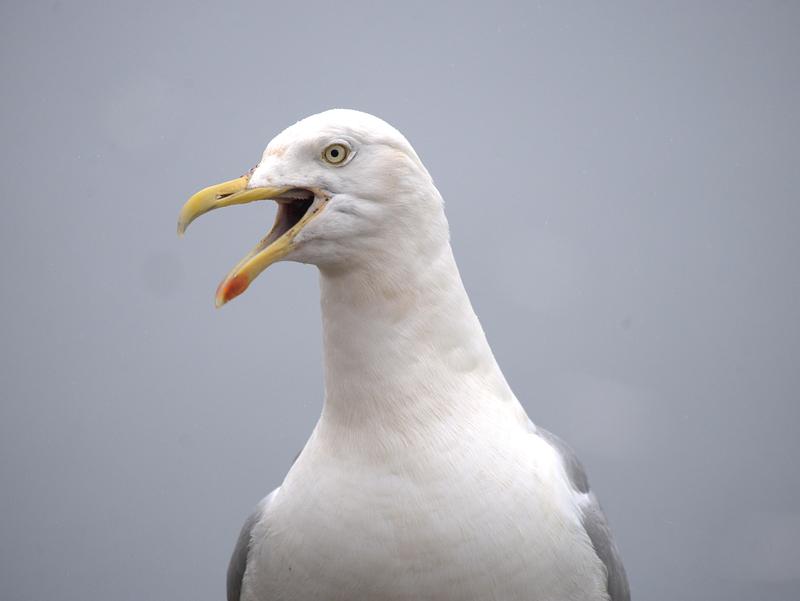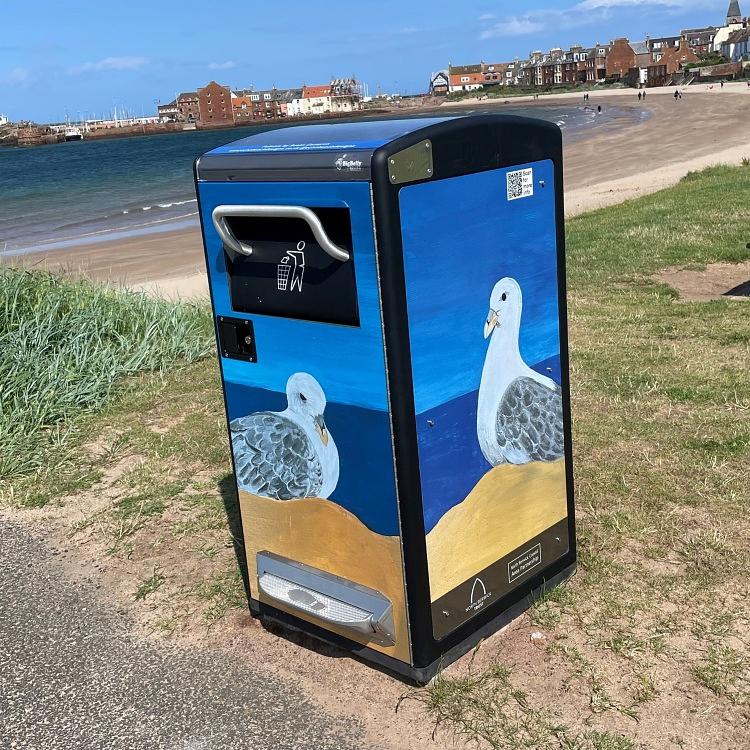_Jamie_McDermaid-2.jpg)
Living with Gulls
Reducing Conflict with Urban Gulls
We call them ‘seagulls’, yet this fascinating and intelligent group of birds are increasingly seen in towns and cities, sometimes many miles from the sea. They are attracted to human settlements for various reasons, including an abundance of easily accessible food and lots of safe, sheltered rooftops to breed and raise their chicks.
Unfortunately, this overlap of their world with ours has brought them into increasing conflict with human residents over issues such as mess (bird faeces and spreading litter), aggressiveness (as they protect their chicks and territory) and noise. Living alongside any wildlife has its challenges. As humans, we like things to be neat, clean and well-managed, yet nature is rarely so tame. Sadly, this can result in species declines—due to a lack of suitable, 'messy' habitats in urban areas—or lead to tensions.
With gulls becoming a common sight in urban spaces, it might surprise you that they are actually in decline. Like other seabirds, gulls are experiencing mounting threats from the climate crisis, invasive species, unsustainable fishing and marine development. Herring gulls, which are often the species that people are most familiar with, have declined by nearly 50% since the 1980’s.

It is important that communities are heard and that their concerns are acknowledged and genuinely addressed; yet it is equally crucial that the way in which we go about this does not drive further declines in already fragile gull populations.
Fortunately, there are simple measures we can take to minimise conflict, support seabird populations and people alike, and live peacefully alongside urban gulls so that everybody benefits:
1. Do not deliberately feed gulls
Gulls are resourceful and, like us, will seek out an easy option if it exists. With fish stocks becoming scarcer, finding natural food is more difficult than ever. It’s little wonder that they choose to hang around when people literally toss them food! This encourages gulls to linger and attracts them to areas where they are regularly fed. Worse still, they can become dependent on human food if directly fed, and it can promote behaviours such as snatching items from hands and bags.
2. Be tidy
Even if they are not being fed directly, there is still an abundance of food available for gulls to scavenge in areas with lots of litter. Furthermore, bins with wide openings are a reliable and convenient food source. By putting our waste in bins, and replacing these with ‘gull-proof’ designs, gulls will not have access and will be more inclined to favour natural food sources away from towns.

3. Get to know gull behaviour
Understanding how their minds work can help us figure out how to minimise problems and appreciate gulls for the incredibly interesting and intelligent birds that they are. For example, aggressive birds are usually protecting eggs and chicks. They are long-lived and return to the same areas every year to nest, as do their surviving chicks, so they can quickly establish themselves in a location. It is therefore during breeding time that they cause most conflict, as they can be very vocal, protective, and have hungry chicks to feed. We can encourage them to nest elsewhere if we…
4. Improve natural habitats
Rooftops create safe breeding sites, which are in short supply in natural habitats as human developments encroach and species such as rodents and mink invade previously predator-free islands. By restoring traditional nesting habitats or creating new areas that they can inhabit without conflict, gulls may be more likely to choose these spaces to breed than in towns and cities.
_Greg_Macvean_(3).jpg)
5. Work together
If we genuinely want to reduce conflict and create healthier spaces for both people and seabirds, communities must be at the heart of the process. Many of the best tools available to us rely on local engagement to ensure that measures are targeted and effective. Crucially, they must be properly resourced, so that people can see and feel the benefits of positive change rather than frustration when their concerns go unanswered.
Header and thumbnail images © Jamie McDermaid and Emily Burton
